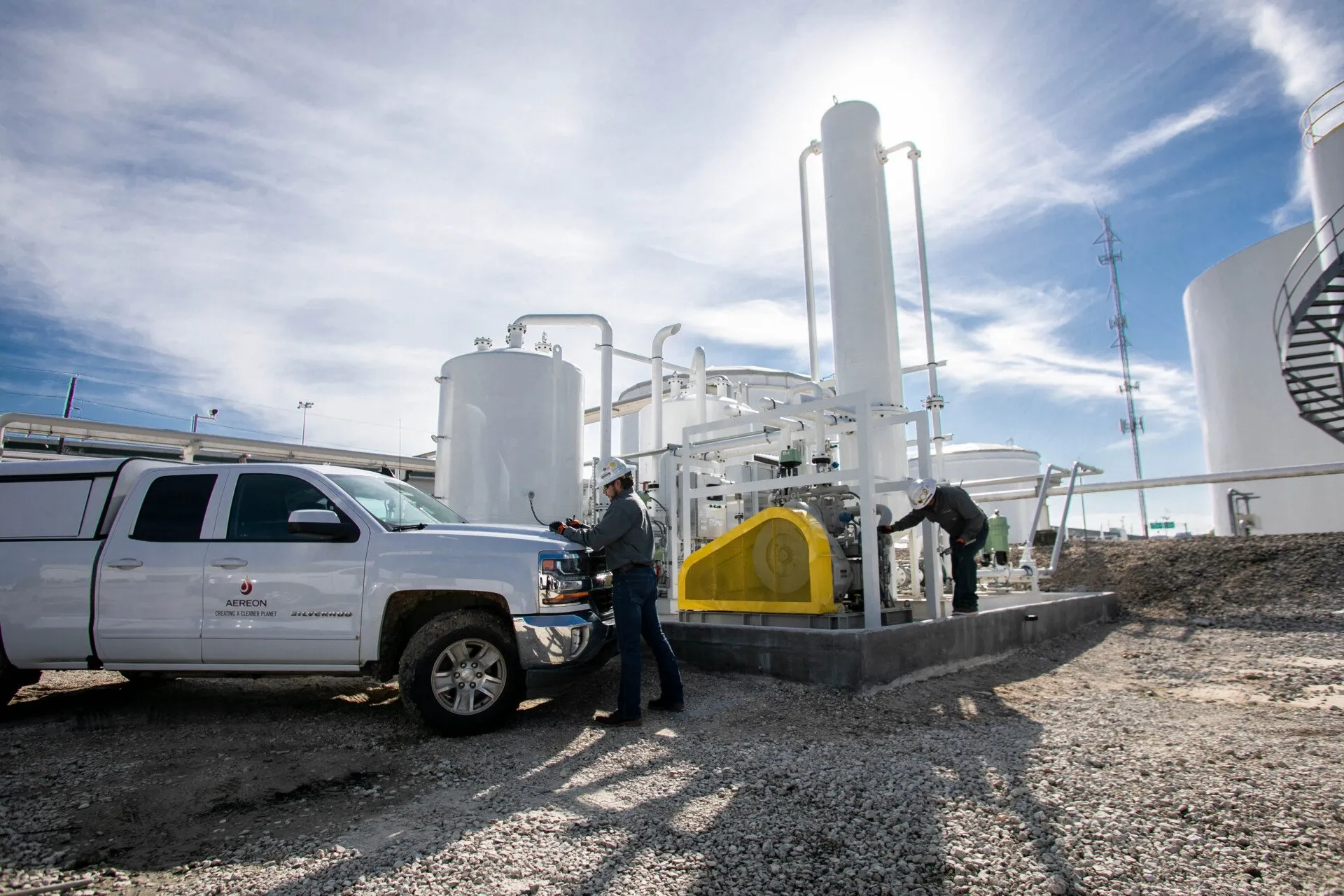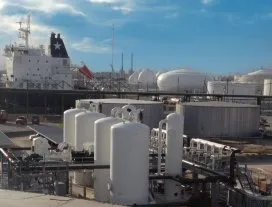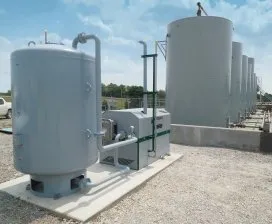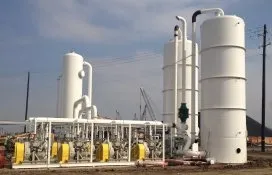Vapor Recovery Units (VRUs) are one of the most efficient ways of capturing the vapors generated from standard oil and gas production processes and generating revenue from this by-product as a result. Since 1980, our Jordan Technologies division has designed, manufactured and serviced VRUs across multiple industries, including liquid-loading terminals, as well as retail gasoline stations.
For terminals (rail, marine storage) loading as well as retail gasoline station unloading applications, an activated-carbon based Vapor Recovery Unit is preferred. While our VRU designs continue to evolve based on constant field feedback from our service technicians, customers, and changing industry requirements, we rely primarily on dry vacuum pumps technology (manufactured by industry leaders Busch and HORI) due to its overall reliability and lower contamination of recovered vapors by lubricating-oils and glycol.
Standard Features for our Carbon-based VRUs
- Up to 99.9%+ reductions in emissions (or as low as 0.15mg/l or 150mg/nmg)
- No NOx, CO, CO2 or SO2 are generated unlike combustion processes
- Data management on cloud
- Custom designed for your application
- Continuous real-time monitoring with dedicated field service support
- Dry vacuum pumps
- Continuous emission monitor (CEM)
- Complete HMI control of all components & set points
- Custom reports and trending software package
- Designed to have an effective service life of 20+ years.
- Advanced computer technology designed to limit downtime
- Jordan Technology legacy design
- Real and measurable ROI: 12 to 24 months depending on throughout

Carbon Bed VRU
Hundreds of customers around the world rely on Cimarron’s Jordan Technologies liquid-ring and dry-vacuum based VRU systems which economically recover a variety of VOCs in truck, rail, marine storage and loading applications.
The industry has moved increasingly to dry pump technology due to its overall reliability and lower contamination of recovered vapors by lubricating-oils and glycol. While our VRU designs continue to evolve based on constant field feedback from our service technicians, customers, and changing industry requirements, we rely primarily on dry vacuum pumps manufactured by industry leaders Busch and HORI.

Marine Carbon Bed VRU
Cimarron’s Jordan Technologies division designs and manufactures carbon-based vapor recovery systems for marine-loading operations in both the US and foreign markets. Our intricate knowledge of the design and certification-compliance requirements has made us a preferred provider of US Coast Guard compliant systems.
The following are major components of our Marine Vapor Recovery System (VRU):
- Marine carbon-bed built to 33 CFR 154.800 Subpart E
- Skid mounted vapor blower system
- Skid mounted dock safety units
- Complete controls package and operating manuals/procedures to ensure that personnel are properly trained to operate and maintain a unit safely

Retail Gasoline Station Carbon Bed VRU
Miniaturized VRUs recover gasoline vapors otherwise lost through normal storage tank evaporation, or during fuel deliveries to retail gas stations. The recovered vapors are returned to storage tanks for eventual sale to customers, effectively reducing product loss and increasing retailer profits.
The patent-pending Jordan Vapor Solution (JVS) is a standard system with a small footprint that can be installed easily in 1 to 2 days without the need to shut down a retail station or make costly modifications to its existing piping or electrical supply. It uses highly efficient activated-carbon technology and a unique closed-loop mechanism to capture vapors as fuel travels from the delivery truck into the station’s underground storage tanks.
The JVC requires only a single-phase power supply and meets all Stage 1 (i.e., truck unloading) compliance requirements.

Oxygen Removal VRU
In crude and condensate truck-loading facilities, the introduction of oxygen into the vapor space can create a dangerous explosive environment. If VRUs are used to recover tank vapors, the oxygen contamination of the vapor can cause O2 levels to exceed allowable limits for pipeline feeds (typically 10 PPM), preventing producers from putting their gas into the pipelines. High O2 levels can shut-in producers, or force them to burn their O2-laden gas stream, causing them to lose revenue and, potentially, exceed local emission limits.
The patent-pending VRU solves both problems by using proven carbon-bed based technology to treat the vapor produced during truck-loading operations and putting virtually O2-free hydrocarbon vapors back into storage tanks and sale pipelines.

Carbon Bed Custom VRU designs
Even though we always try to find a standard model that would best fit your applications, we can also design custom VRUs based on your company’s specifications or if the conditions are outside of what we consider standard operating conditions.
Just contact us with your requirements and we will send you a quote.


